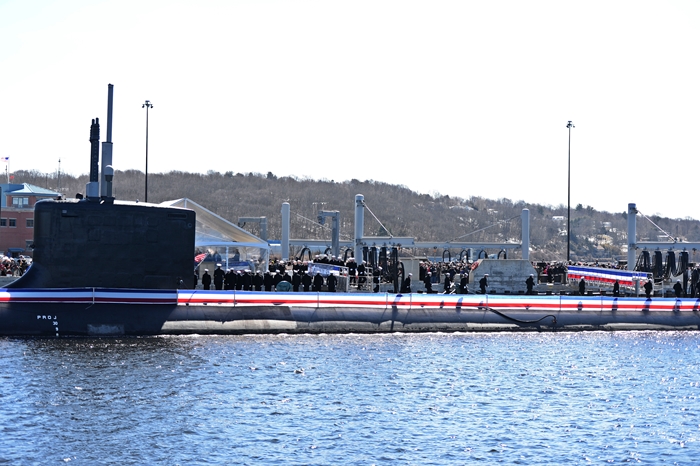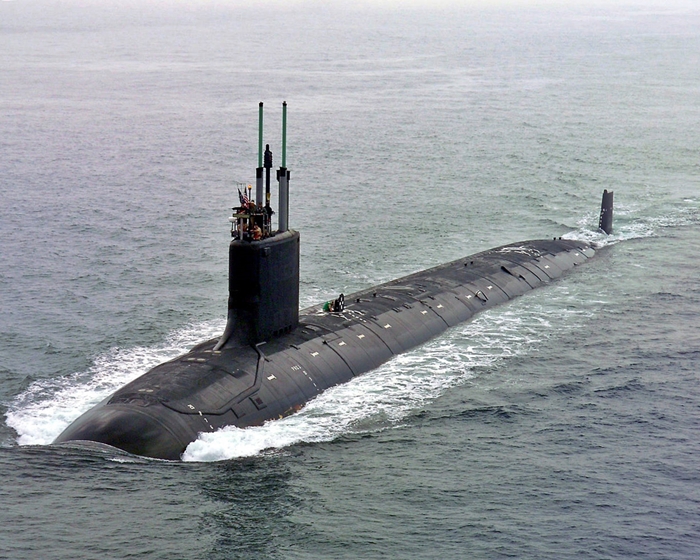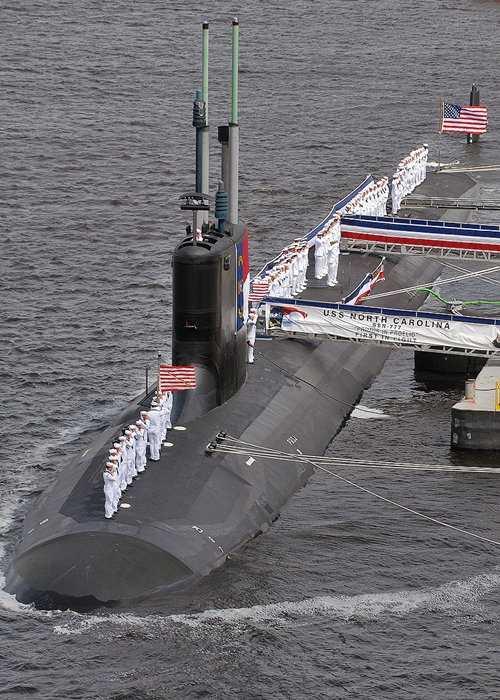March
Nuclear submarine with X-Box controller goes into service
On March 17, 2018, the ceremonial commissioning of the latest American nuclear-powered attack submarine, the USS Colorado, took place at Naval Submarine Base New London in Groton, Connecticut. It is the 15th boat of the Virginia class and the fifth of the improved third lot, Block III, in which around 20% of the submarine has been redesigned to save costs. Colorado was ordered on December 22, 2008 from a consortium of the two American defense companies General Dynamics and Huntington Ingalls Industries. On March 7, 2015, construction began at Newport News Shipbuilding in the city of the same name in Virginia. After a construction period of one year and nine months, Colorado was officially christened during her launch on December 3, 2016. The submarine spent the time until its commissioning with the final outfitting and testing in Groton. The 134 men – although women generally also serve on US Navy submarines, none are still under crew – on the currently most modern nuclear submarine are commanded by Commander Reed Koepp.


The Virginia-class submarine
The Virginia class is the latest generation of US Navy nuclear-powered attack submarines.
|
Year of construction |
from 1999 |
|
Shipyard |
General Dynamics Electric Boat |
|
Displacement |
7.900 t |
|
Length |
115 m (377 ft) |
|
Beam |
10 m (34 feet) |
|
Draught |
10 m (34 feet) |
|
Propulsion |
Pressurized Water Reactor S9G (30 MW) , 1 pump-jet propulsor |
|
Engine Power |
40.000 HP Turbine |
|
Speed |
25+ kn |
|
Range |
only limited by provisions |
|
Diving depth |
240 m (787 ft) (test depth) |
|
Fuel |
Uranium fuel rods |
|
Bewaffnung |
4 bow torpedo tubes, 12 vertical missile tubes for |
|
Complement |
135 |
It is intended to replace the aging Los Angeles class after the Seawolf class designed at the end of the Cold War turned out to be too expensive. With a price of 3-3.5 billion US dollars per unit, the Seawolf occupies second place on the ranking of the most expensive submarines, only beaten by the French nuclear submarines with ballistic missiles (SSBN) of the Triomphant class with a unit price of 4.3 billion US dollars. With a current unit price of 2.7 billion US dollars, although inflation of over ten years must be taken into account, the Virginia class is much more affordable. This cost saving was achieved by using as many civilian series products as possible, especially with the digital systems of the submarine.
The Virginia class is designed for a very wide range of applications. It can be used not only on the high seas to combat surface, underwater and land targets and as a sonar outpost for naval units, but also in shallow, coastal waters, for reconnaissance and espionage missions, for mine warfare with special underwater drones and the deployment of Special Operation Forces.

Instead of conventional optical periscopes, the Virginia class has two photonic masts with high-performance cameras, whose data is transmitted to the control room via optical fibres. This means that no major breakthrough through the pressure hull is necessary and the control room no longer necessarily has to be located under the sail.
The heart of the Virginia-class propulsion system is the latest generation of nuclear reactors for submarines with an output of 30 MW. A special feature of these reactors is that the nuclear fuel rods last a submarine’s lifetime and do not have to be replaced at great expense, as is the case with other nuclear submarines. The energy is transferred into the water by means of a pump-jet propulsor instead of a conventional propeller. A major advantage of the pump-jet propulsor is that it is comparatively quiet, since the same propulsion can be generated with considerably fewer revolutions compared to a conventional propeller. The reduced number of revolutions also results in a correspondingly lower risk of particularly noisy cavitation.
Instead of using one or more control yokes, the Virginia class is controlled by a sidestick. In addition, a fully computer-based fly-by-wire control system with fiber optic cables is used.
Constantly modernized and kept up to date, the Virginia class is to remain in service until after 2060.

In many media, for which the commissioning of a new U.S. Navy submarine was certainly not worth reporting, the event was mentioned by the fact that input devices for a computer game console of the U.S. company Microsoft – commonly X-Box controllers – were used to control the boat’s photonic masts. This is not only a particularly vivid example of the use of parts from civil series production to save costs, in fact these input devices for computer games have also proven to be more practical on board than the joysticks used so far. According to the commander, many crew members were already familiar with it from their private lives. The author also uses one of these X-Box controllers on his private PC and can only agree with the opinion of the US Navy that it is a particularly practical, sophisticated and robust input device.
The military, here the US Navy, uses input devices for video games – this technology transfer also goes the other way around. The computer flight simulation enthusiast can purchase an absolutely authentic replica of the Fairchild-Republic A-10 Thunderbolt control stick, which can be connected to his home PC to indulge his hobby. This is relatively expensive, but impresses with its excellent workmanship and handling.
Weblinks:
